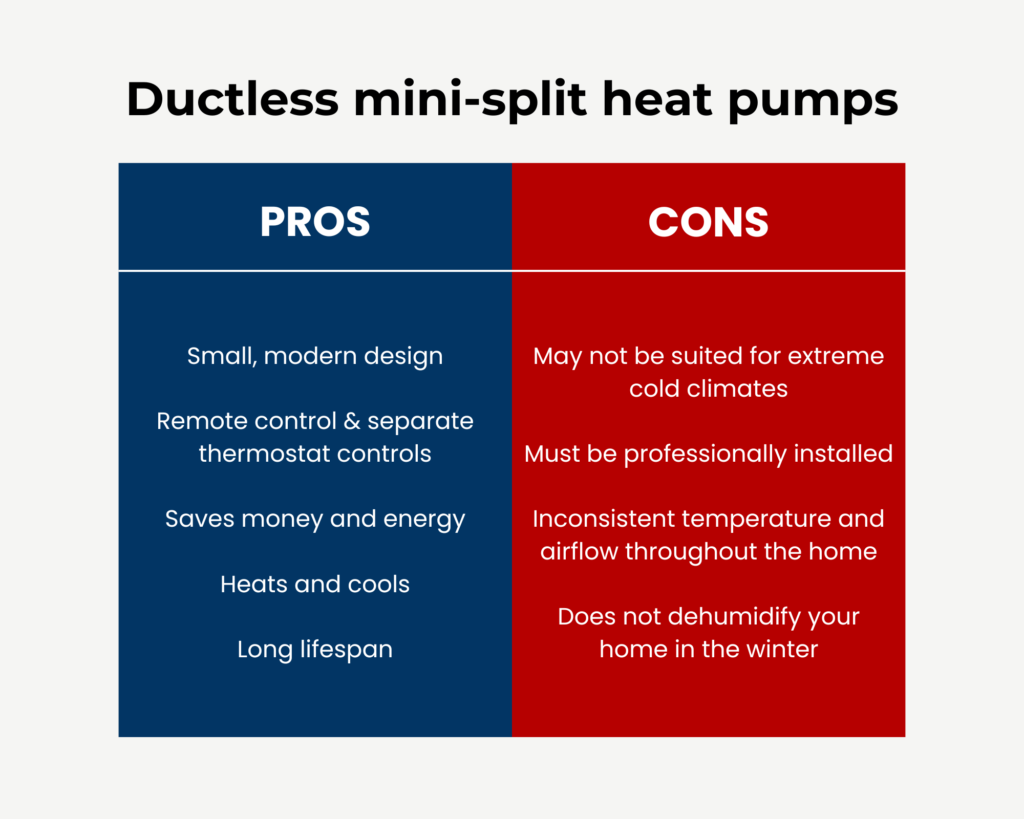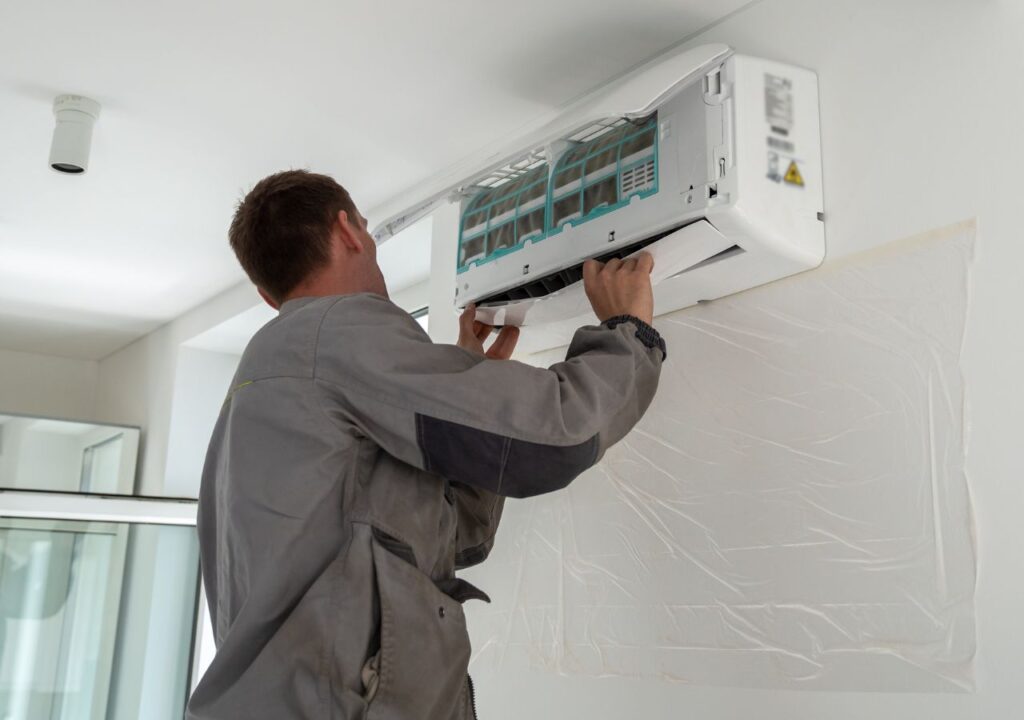Understanding How a Ductless Mini-Split Heat Pump Works
Discover the principles behind a ductless mini-split heat pump to make informed decisions about your air conditioning and heating needs. This comprehensive guide explains the operation of this versatile HVAC system:
Understanding how a ductless mini-split heat pump functions is crucial for informed HVAC decisions. Here’s a detailed guide on how this efficient system works:
What Is a Ductless Mini-Split Heat Pump?
A ductless mini-split heat pump is an adaptable HVAC solution that provides heating and cooling capabilities without requiring ductwork. This system comprises an outdoor unit (compressor/condenser) and one or more indoor units (air handlers) linked via refrigerant lines and electrical wiring. This setup benefits spaces lacking pre-existing ducts, allowing targeted climate control in areas such as room additions or remodeled basements.

1. Essential Components
- Outdoor Unit: This component includes the compressor, condenser coil, and a fan to circulate refrigerant to the indoor units. It’s usually positioned on a concrete base or mounted against an external wall to maximize efficiency.
- Indoor Unit: Typically mounted on walls or ceilings, this unit features an evaporator coil and air handler that directly releases conditioned air into the room. Each unit can be independently managed, providing precise temperature adjustments for different zones.
- Refrigerant Lines: These lines transfer refrigerant between the indoor and outdoor units, facilitating efficient heat exchange. They are insulated to minimize energy loss.
- Conduit: This houses the power cable, refrigerant tubing, suction tubing, and a condensate drain. It connects the indoor and outdoor units through a small exterior wall hole, enabling a clean and straightforward installation.
2. Operational Modes
- Cooling Mode: The indoor unit pulls heat from the room’s air using the evaporator coil. The refrigerant absorbs this heat, evaporating and traveling to the outdoor unit, releasing the heat outdoors as it condenses. The cooled refrigerant cycles back to the indoor unit to maintain a cool environment efficiently.
- Heating Mode: The process is reversed in heating mode. The outdoor unit captures heat from the external air and transfers it via refrigerant to the indoor unit, where it warms the room by releasing heat through the evaporator coil. Heat pumps are extremely efficient as they transfer heat rather than generating it.

3. Advantages of Ductless Mini-Split Systems
- Energy Efficiency: By eliminating ductwork, mini-splits reduce energy losses. Many models incorporate inverter technology that adjusts compressor speed based on demand, enhancing energy use and lowering costs.
- Zoning Capability: These systems support zoned operation, allowing for independent temperature control in various rooms or areas, enhancing comfort and efficiency.
- Ease of Installation: The lack of ductwork necessitates less invasive installation processes, ideal for retrofitting or specific area installations.
- Enhanced Indoor Air Quality: Mini-splits prevent the buildup of dust and allergens often found in ducts. Advanced filtration options in many units further purify the air, benefiting those with allergies or respiratory issues.
- Quiet Operation: With major noise-producing components situated outside, mini-splits ensure a quiet indoor environment, making them suitable for noise-sensitive areas like bedrooms.
4. Applications
- Single-Zone: Perfect for individual rooms or designated areas needing specific temperature control.
- Multi-Zone: Ideal for larger spaces with several indoor units connected to one outdoor unit, providing tailored comfort for each zone.
- System Extensions: An excellent choice for enhancing climate control in hard-to-reach areas of existing systems, like attics, basements, or extensions.
5. Maintenance Recommendations
- Filter Maintenance: Regularly clean or replace filters to enhance air quality and maintain system efficiency.
- Outdoor Unit Care: Keep the unit clear of debris and ensure sufficient airflow around it. Regularly clean coils and fins.
- Refrigerant Checks: Inspect refrigerant lines for leaks or damage, and consult a professional for repairs.
- Annual Inspections: Schedule yearly inspections with a professional technician to guarantee optimal performance.
Understanding the workings of a ductless mini-split heat pump and recognizing its benefits can guide your decision on whether it suits your home or business needs. For specialized advice, installation, or maintenance, reach out to Living Air Design today. Our skilled technicians are ready to help you select and maintain the ideal system for your requirements.


